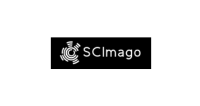Fungus Damage Effect on Physical-Chemical Characteristics of Corn Grains
DOI:
https://doi.org/10.5380/avs.v26i4.77519Palavras-chave:
chemical composition, density, fungi, hardness, water activityResumo
The objective of this study was to analyze the physical-chemical characteristics of corn lots with different ratios of damaged to intact grains, considering the interaction between them. Recently harvested corn grains were selected, and grains attacked by fungi (fermented and moldy) and intact grains were separated to establish the following grain mixtures (treatments): 1 – 0% fermented/moldy and 100% intact grains; 2 - 10% fermented/moldy and 90% intact grains; 3 - 20% fermented/moldy and 80% intact grains; 4 - 30% fermented/moldy and 70% intact grains; and 5 - 40% fermented/moldy and 60% intact grains. Samples from each treatment were analyzed for dry matter (DM), ash (A), crude protein (CP), crude fiber (CF), ether extract (EE), and gross energy (GE) contents, water activity (aw), density, and hardness. Chemical composition and density data were submitted to analysis of regression, hardness values were compared by Tukey test (P<0.05), and Pearson’s correlations (P<0.05) between chemical and physical parameters were calculated. Increasing ratios of moldy corn relative to intact corn reduced DM, CF, EE, and GE contents, increased A, CP, Wa values, and reduced the density of the lot. Moldy grains presented lower hardness values compared with intact corn. This study shows that fungus damage affects corn grain physical-chemical properties.
Downloads
Publicado
Como Citar
Edição
Seção
Licença
Autores que publicam nesta revista concordam com os seguintes termos:
- Autores mantém os direitos autorais e concedem à revista o direito de primeira publicação, com o trabalho simultaneamente licenciado sob a Creative Commons - Atribuição 4.0 Internacional que permite o compartilhamento do trabalho com reconhecimento da autoria e publicação inicial nesta revista.
- Autores têm autorização para assumir contratos adicionais separadamente, para distribuição não-exclusiva da versão do trabalho publicada nesta revista (ex.: publicar em repositório institucional ou como capítulo de livro), com reconhecimento de autoria e publicação inicial nesta revista.
- Autores têm permissão e são estimulados a publicar e distribuir seu trabalho online (ex.: em repositórios institucionais ou na sua página pessoal) a qualquer ponto antes ou durante o processo editorial, já que isso pode gerar alterações produtivas, bem como aumentar o impacto e a citação do trabalho publicado.













